“Time is of the essence.”
It certainly is. If you are serious about getting the candidates you need to fill open roles – timing is crucial. And that’s even more imperative in today’s hiring climate and the race for talent.
In reality, timing is one variable that can make or break most, if not all, of the touchpoints in your candidate journey. Below are three examples of these touchpoints, with specific attention to job ad performance. And remember, when we talk about “job ad performance” this ultimately speaks to your ability to acquire candidates on budget and on time.
Example 1: Best days of the week to advertise jobs
As we’ve seen over the past few years, Appcast Research indicates that applicant volume is highest at the beginning of the week and tapers off toward the weekend. For those who are employed, they may find themselves, after the weekend, returning to a job or workplace they’re not happy at and it leads to seeking other opportunities. Perhaps for the unemployed – many of whom treat job search like a job – are tackling job applications at the start of the week. Although we can’t say for sure why, the data is clear that there’s an advantage to posting your jobs early!
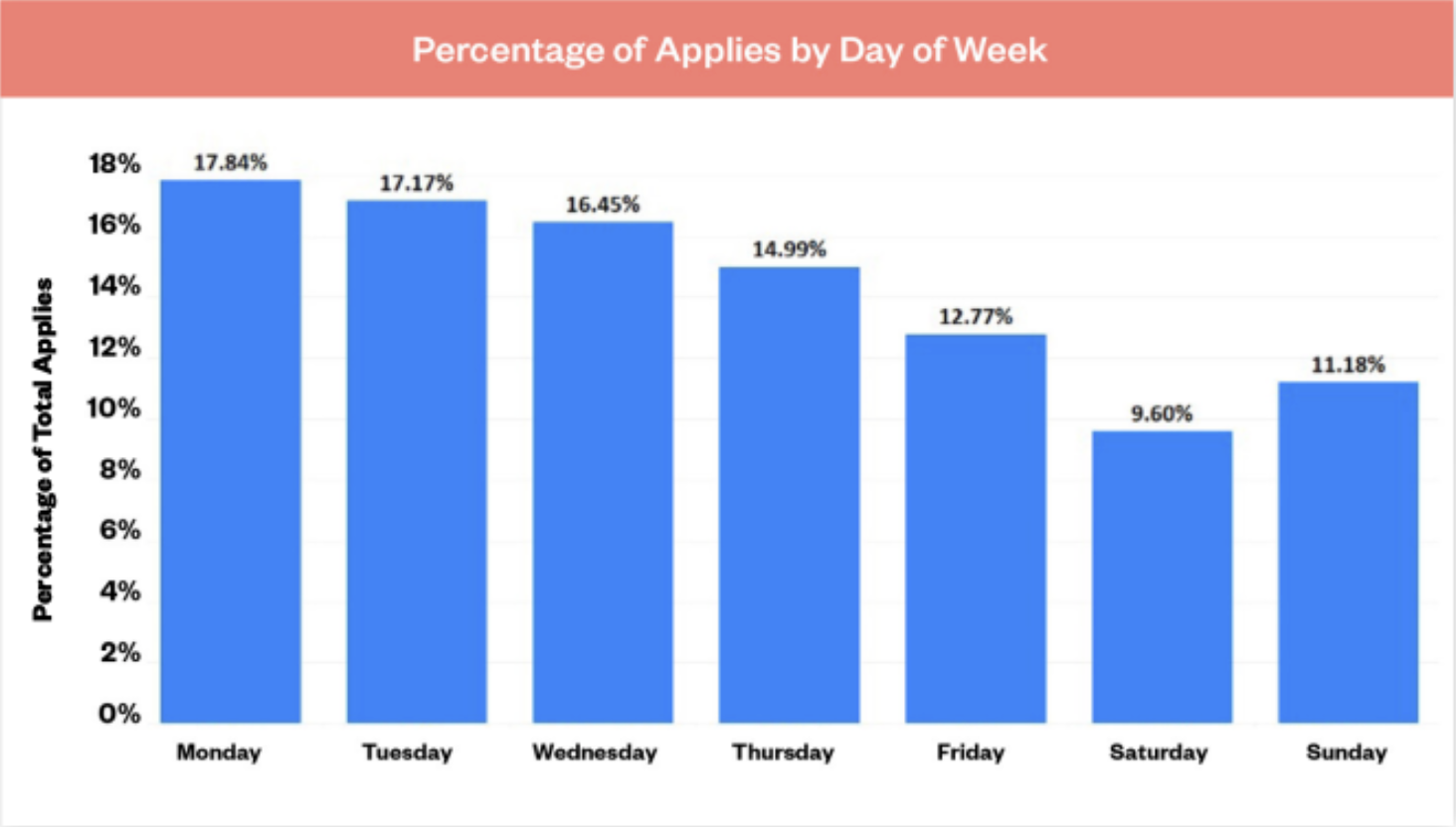
Note: This chart shows 100% of job applications for the week, and their distribution of when they occur throughout the week.
Additionally, while the variance is less significant, posting your jobs earlier in the week also gives you a higher rate of conversion on your job ads. In the graph below, you can see that Tuesday through Thursday (with Monday close behind!) have the highest likelihood of job seekers who not only check your job ad out but they apply to the job too! Suffice to say, between both of these data views, posting jobs earlier in the week is the best practice.
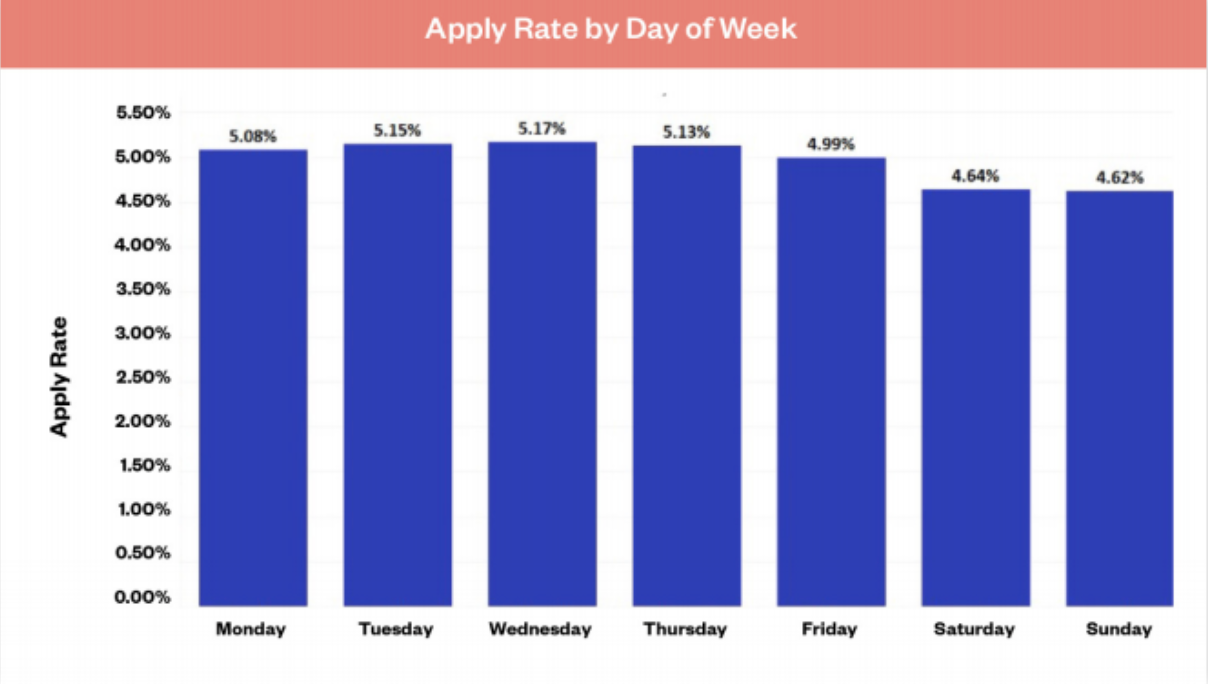
Note: This chart shows the apply rate for each day of the week. For example, for all the people who click on jobs on Wednesday, 5.17% of them actually apply for those jobs.
Example 2: Best Day of the Month
When we think about clicks on a job as a way to understand job seeker traffic – or, as some would say “lookie-loo’s” – we can see in the graph below that clicks per job steadily taper off as we get further along in the month. However, take note of the apply rate – it remains relatively consistent over the course of the month.
What does that mean? It means that there’s less competition for “job seekers’ eyes” later in the month but still as much opportunity to generate applicants. The takeaway: if you can better allocate your budget – or “spread the peanut butter” as we say – across the entire month, there exists a great opportunity to get applicants at that time, with less competition.
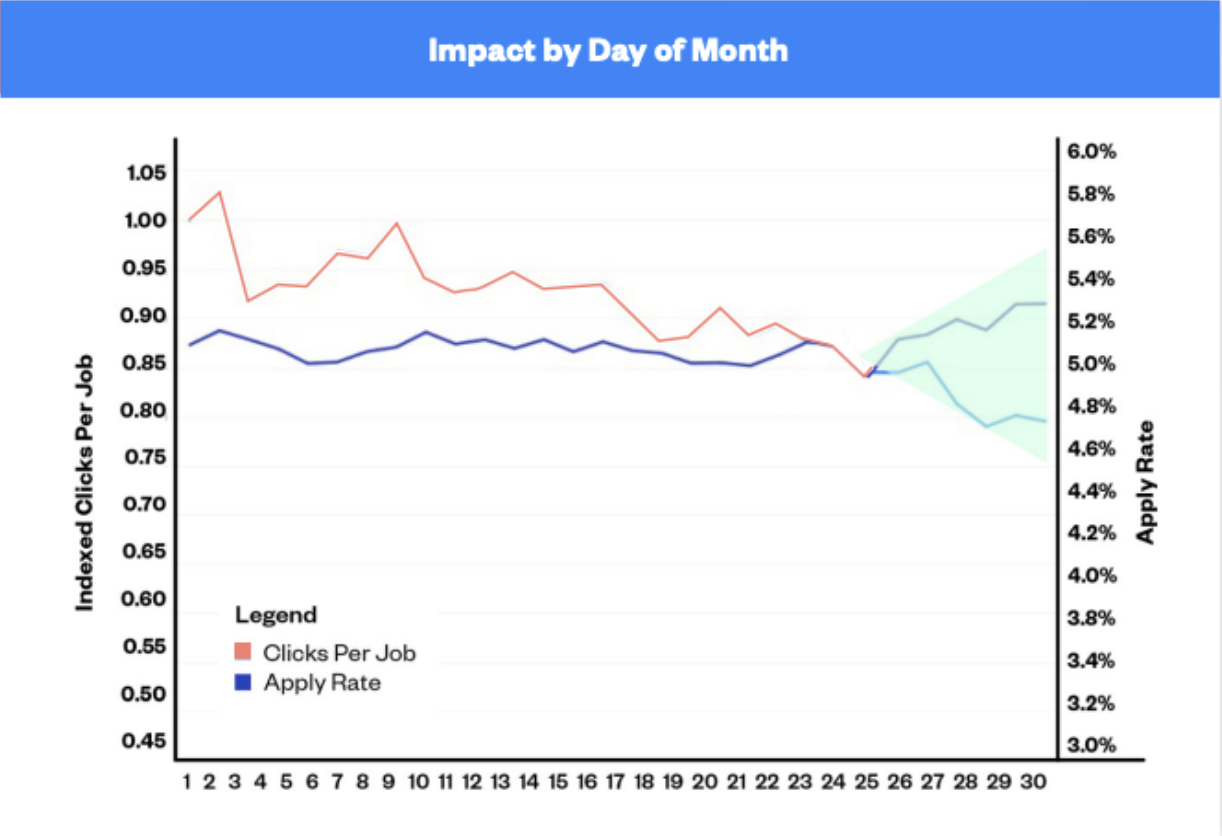
For more of the latest recruitment marketing data, check out our 2022 edition of our annual Recruitment Marketing Benchmark Report.
Example 3: Time it Takes to Complete an Application
This is one of – if not THE – most significant ways that time impacts the performance of your job ads. Candidate drop-off is a real issue and can lead to wasted spend and more importantly, wasted candidates!
Notice that as the apply process time surpasses 5 minutes and 15 minutes, respectively, there is major degradation in the apply rate. Why does this matter?
It means – if 100 people click on your job ad, then instead of getting 12 or 13 applicants, you’re only getting 3 or 4. And what’s worse? If you’re paying on a cost per click basis, that means you’ve paid for over 96 or 97 clicks and have nothing to show for it.
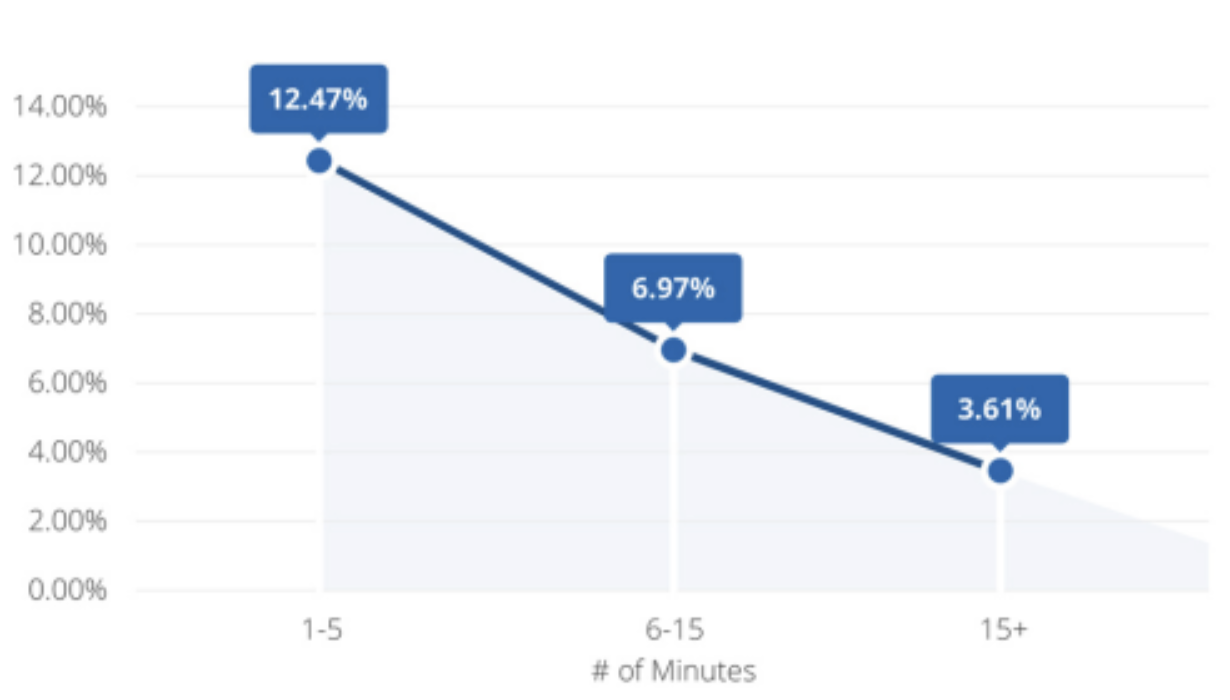
What’s one way to streamline and shorten your apply flow? Reduce the number of questions. Remember, this isn’t a marriage proposal – it shouldn’t be complicated! Stop asking questions that can be part of later stages of the hiring process, stop asking for work history if you’ve already required a resume upload (which we would recommend as optional, particularly if many of your applicants are coming from a mobile device – which, our research shows they are!), and for goodness sake, don’t ask for a SIN.
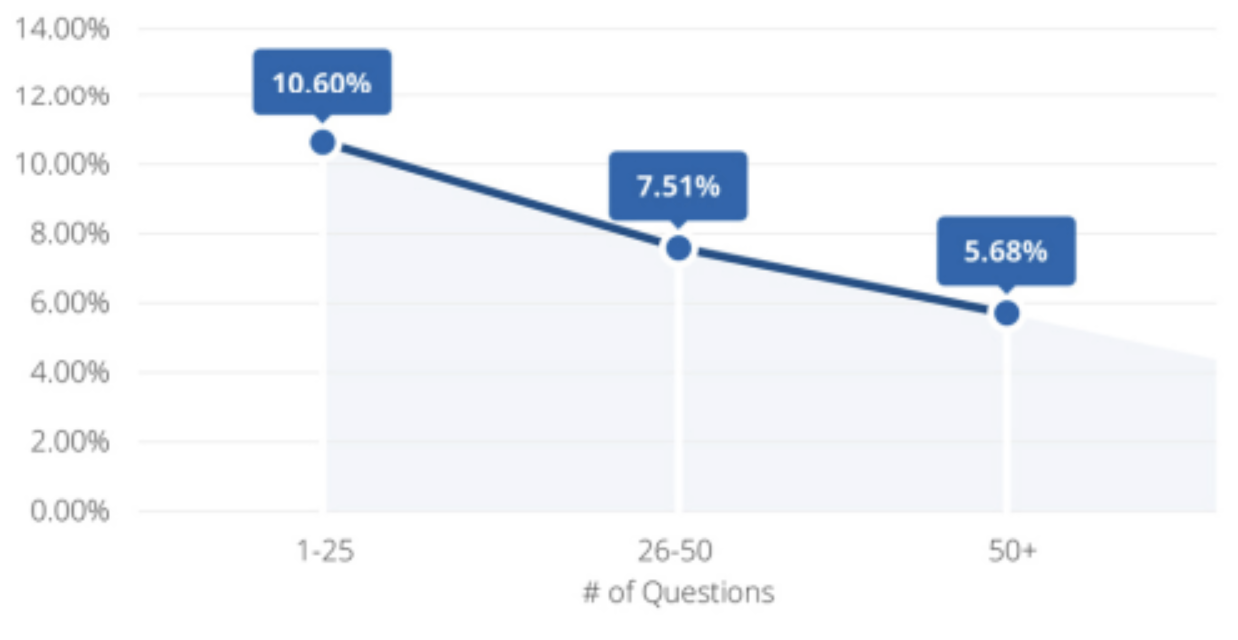
How to ensure time is on your side
There’s an overlying message here: speed matters. And who knows it better than recruiters? Time-to-fill is still a KPI that many recruiting teams are tied to. What if you could reduce time-to-fill, increase applicant volume, and potentially recruiting costs all by paying more attention to timing in your recruitment processes?
For the first two timing examples, technology can help. Programmatic technology ensures that your jobs are posted and sponsored in the most optimal way to both capitalize on job seeker traffic and applications and reduce inefficiency of your job ad budget.
For the last point about shortening your apply flow – this comes down to choices and to getting internal stakeholders on board with those choices (which the data in this post can help you with!). We’re all in a crunch to find talent right now, so let’s stop making it difficult for good candidates to apply. “Survival of the fittest” has no place in the hiring process; the best candidates know they can (and will) look elsewhere at the first sign of friction or barriers during the application.
There are many other applications of how time impacts performance of job ads (how close the candidate is to the job, how long the job is posted, etc) and we’re keen to keep digging into our data on it and we’ll be sure to keep you posted on what we find out! In the meantime,check out this whitepaper for more best practices for job ads, Best Practices in Job Ad Content.


